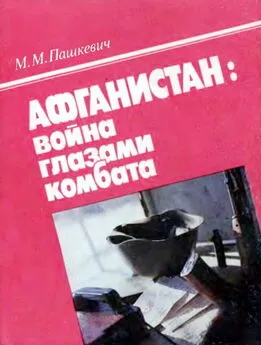Михаил Супотницкий - Биологическая война (Часть 3)
- Название:Биологическая война (Часть 3)
- Автор:
- Жанр:
- Издательство:Кафедра, Русская панорама
- Год:2013
- Город:Москва
- ISBN:978-5-93165-328-0
- Рейтинг:
- Избранное:Добавить в избранное
-
Отзывы:
-
Ваша оценка:
Михаил Супотницкий - Биологическая война (Часть 3) краткое содержание
Часть 3. Частная неправильная эпидемиология.
Биологическая война (Часть 3) - читать онлайн бесплатно полную версию (весь текст целиком)
Интервал:
Закладка:
Thurmond K., Remsen E. E., Kowalewski T. et. al. Packaging of DNA by shell crosslinked nanoparticles // Nucleic. Acids. Res 1999. V 27. № 14. P. 2966–2971.
Tigera W. D., BenensonA. S., Gochenour W. S. A rborne Q fever // Bacteriol. Rev. 1961. V. 25. P. 285.
Tinkle S. S., Antonmi J. М., Rich B. A. et al. Skin as a route of exposure and sensitization in chronic beryllium disease // Environ. Health. Perspect 2003. V. 111. P. 1202–1208.
Tirado S. М., Yoon К S. Antibody-dependent enchancement of virus infection and disease // Viral. Immunol. 2003. V. 164. № 1. P. 69–86.
Toleman M. A., Bennett P. М., Walsh T. Common regions e.g. orf513 and antibiotic resistance: IS91-like elements evolving complex class 1 integrons // J. Antiimcrob. Chemother. 2006. V. 58. P. 1–6.
Towner J. S., Amman B. R., Sealy Т. K. et al. Isolation of genetically diverse Marburg viruses from Egyptian fruit bats // PLoS Pathog. 2009 V. 5. № 7 (e1000536. doi: 10.1371/journal.ppat. 1000536).
Towner J. S., Sealy T. R. Khristova M. R. et al. Newly discovered Ebola virus assoc ated with yemorrhag.c fever outbreak in Uganda // PLoS Pathog. 2008. V. 4. № 11 (31000212 doi: 10.1371/journal.ppat.l000212).
Townsend Peterson A., Bauer J., Mills J. N. Ecologic and geographic d.stribution of filovirus disease // Emerg. Intect, Dis. 2004. V. 10. № 1. P. 40–47.
Trescos Y., Tournier J-N. Cytoskeleton as an emerging target of anthrax toxins // Toxins. 2012. V. 4. P. 83–97.
Trillat A. Immunization by inhalation // J. Air.. Med Ass. 1932. V. 99. № 7. P. 573–574,
Tsukamoto М., Okuda T. et al. Bovine serum albumin as a lyoprotectant for preparation of DNA dry powder formulations using the spray-freeze drying method // Biol. Pharm. Bull. 2012. V. 35. № 7. P. 1178–1181.
Tuanyok A., Leaden B. R., Auerbach R. et al. Genomic.slandstrom five strains of Burkholderia pseudomallei // BMC Genomics 2008. V. 9 (566 doi: 10.1186/1471-21 o4-9-566).
Tubaro A., Durando P., Del Favero G. et al. Case definitions for human poisonings postulated to palytoxins exposure // Toxicon. 2011. V. 57. P. 4/8- 495.
Tucker J. Toxins: area weapons // Gene Watch 1985. V.2. № 2. P. 10–12.
Turkmani A., loanmdls A., Christidou A et a!. In vitro susceptibilities of Brucella melitensis isolates to eleven antibiotics // Annals of Clin. Microbiology and Antimicrobials. 2006. V. 5 (doi:10.1186/1476-0711-5-24).
Twenhal N. A., Alves D A., Purcell В. K. Pathology of inhalational Francisella tuiarensis spp. tuiarensis SCHU S4 infection in African green monkeys (Chlorocebus aethiops) // Vet. Pathol. 2009 V. 46. P. 598 706.
Ulbrichi W. Sodium channel inactivation -Molecular determinant! and modulation // Physiol. Rev. 2005. V. 85. P. 1271–1301.
Ulrich R. G., Sidell S., Taylor T. et al. Staphylococcal enterotoxin В and related pyrogemc toxins // Medical aspects of Chemic. and Biol. Warfare / Ed. F. R Sidell, E. T. Tafuqi, D. R. Franz. Wash., 1997. R 621
Urich S. K., Petersen J. M. In vitro susceptibility of isolates of Francisella tularensi: types A and В from North America // Antimwrob Agents and Chemother. 2008. V. 52. № 6. P. 2276–2278.
US Army activity in the U.S. Biol, warfare programs. V. 1 and 2. In: Hearings oefore the Subcommittee on Health and Scientific Research of the Committee on Human Resources. United States Senate. 95 Congr. 1 Session. March 8 and may 23, 1977. Washington, U.S. Government Printing Office, P. 22—234.
US Army activity in the U.S Eiolog.cal warfare programs. V. 1. February 24,1977 (Unclassified), P. 57–60, 202–209, 224–234.
US Departments of the Army and Air Force, Militaiy biology and biological agents. March 1964 (TM 3-216 and AFM 355-6).
US Departments of the Army, Navy and Air Force. Employment of chemical and biological agents March, 1966 (FM 3-10; NWIP 36-2; AFM 355-4 FMFM 11-3).
Usamriid’s medical management of biological casualties handbook vForth Edition)/ Edit. M. Kortepeter, G. Christopher, T. Cieslak, R Culpepper, R DarLng, J. Paviin, J. Rowe, K. McKee, E. Eitzen, USAMRHD. Fort Detrick, Maryland, 2001.
Ushkaryov Y. A., Rohou A., Sugita S. a-1 atrotoxin and its receptors // Handb. Exp. Pharmacol. 2008. V. 184. P. 171–206.
Valcarcel C. A., Serra M. D., Potrich C. et al. Effects of lipid composition on membrane permeabilization by sticholysin 1 and II, two cytolysins of the sea anemone Stichodactyla hehanthus // Biophys. J. 200’ V. 80. P. 2761–2774.
Vale-Gonzalez C., Gomez-Limia B., Vieytes M. R et al. Effects of the marine phycotoxin palytoxin on neuronal pH in primary cultures of cerebellar granule cells // J. Neurosci. Res. 2007. V. 85. P. 90–98.
Van Andel R., Sherwood R ., Gennings C. et al. Clinical and pathologic features of Cynomolgus macaques (Maca-ca fascicularis) Infected with aerosolized Yersinia pestis // Compar Med. 2008. V. 58 № 1. P. 69–75.
Van Ert M. N., Easterday W. R., Huynh L. et al. Global genetic population structure of bacillus anthracis // PLoS ONE. 2007. Is. 5. e461. doi: 10.1371/journal.pone.0000461.
Van Ert M. N., Easterday W. R., Simonson T. Set al. Sirain-specific single-nucleotide polymorphism assays for the Bacillus anthracis Ames strain // J. Clin Microbiol. 2007. V. 45. P. 47–53.
Vassilevski A. A., Kozlov S. A., Grishin E V. Molecular diversity of spider venom // Biochem. (Moscow». 2009. V 74. № 13. P. 1505–1534
Verger J. М., Grimunt P., urimunt P. et aI Brucella a monospecific genus as shown by deoxyrioonucleic acid hybridization // Int. J. Syst. Bacteriol. 1985. V. 35. P. 292–295.
Verhoeyen E., Cosset F. L. Surface-engmeering of lentiviral vectors // J. Gene Med. 2004 V. 6. P. 83–94.
Vietri N. J., Purcell b. K., Toberry S. A. et al. A short course of antibiotic treatment is effective in preventing death from experimental mhalational anthrax after discontinuing antibiotics // J. Infect. Dis. 2009. V. 199 № 1. P. 336–341.
Vodkin М., Leppla S. H. Cloning of the protective antigen gene of Bacillus anthracis // Cell. 1983. V. 34. P. 693–696.
Vogel S., Sördy M., Glos K. et al. The munich outbreak of cutaneous cowpox infection transmission by infected pet rats // Acta Derm. Venereol. 2011. V 91 (doi: 10.2340/00015555-1227)
Vogler A., Birdsell D ., Price L. et al. Phylogeography of Francisella tularensis: global expansion of a highly fit clone Ц1. Bacteriol. 2009. V. 191. № 8. P. 2474–2484.
Volger A., Busch J., Percy — Fine S. e> al. Molecular analysis of rifampin resistance in Bacillus anthracis // Antimicrob. Agents Chemother. 2002. V.46. Ne 2. P. 511–513.
Walker D., McCormick I., Johnson K. et al. Pathologic and Virologic Study of Fatal Lassa Fever in Man // Am. J. Pathol. 1982. V. 107. P. 349–356.
Wallace M. J., Smith D. W, Broom 4 K. et al. Antibody-dependent enhancement of Murray Valley encephalitis virus virulence in mice // J. Gen. Virol. 2003. V 84. P. 1723–1728.
Walters F. S., Stacy Ch. М., Lee М. K. etal An engineered chymotrypsin/cathepsin G site in domain 1 render a BacilluN thuringiensis Cry ЗА active against western coin rootworm larvae // Appl. Environ. Microbiol. 2008. V. 74. P. 367–374.
Wang £., Bowen R. A., Medina G. et cl. Virulence and viremia characteristics of 1992 epizootic subtype Ic \fene zuelan equine encephalitis viruses and closely related enzootic subtype Id strains // Air. J. Trop. Med. Hyg. 2001. V. 65. № 1. P. 64–69.
Wang S., Ma N., Gao S. J. et al. Transgene expression in the brain stem effected by intramuscular :njection of polyethylenimine/DNAcomplexes // Mol. Ther. 2001 V 3. P. 658–664.
Wang Yu-Qiang, Su Jing, Wu Fei et al. Biscarbamate cross-linked polyethylenimine derivative with low molecular weight, low cytotoxicity, and high effic.ency for gene delivery // Intern J. of Nanomed. 2012. V. 7. P. 693–704.
Wanisch K., Yunez-Munoz. R. J. Integration-deficient Lentiviral vectors: a slow coming of age // The American Society of Gene & Cell Therapy. 2009. V. 17 № 8. P. 1316–1332.
Wanisch K., Ynez-Mucoz R. J. Integration-deficient lentiviral vectors: a slow coming of agt // www.mole-culartherapy.org. 2001 V. 17. № 8. P. 1316–1332.
Wannemacher R. W. Anderson J. B. Inhalation ricin: aerosol procedures, toxicology and therapy // Inhalation toxicology, 2nd ed., eds. H. Salem and S. Katz. 2006. P. 973–980.
Warfield K. L., Swenson D.L., Olinger G.G., Nichols D. K. et al. Gene-specific countermeasures against Ebola virus based on antisense phosphorodiamidate morpholino oligomers // PLoS Pathogens. 2006. V 2. Is. I P. 5–13.
WeaverS. C., KangW.L., Shirako Y. et al. Recombinational history and molecular evolution of western equine encepnalomyelitis complex alphav lruses // J. Virol. 1997 V. 71. P. 613–623.
WeaverS. C., Reisen W. K. Present and future arboviral threats // Antiviral Res 2010. V. 85. № 2 (328. doi: 10.1016/j.antiviral.2009.10.008).
Webster R. Influenza an emerging disease // Emerg. Infect. Dis. 1998. V. 4. № 3. P. 416–419.
Wells W. F. Air-borne infection. II. Droplets and droplet nuclei // Am. J. Hyg. 1934. V. 20. P. 611–618.
Wells W. F., Rateliffe H. L., Crumb C. On the mechanism of droplet nuclei infection. II. Quantitative expenmental air-borne infection in rabbits // Am. J. Hyg. 1948. V- 47. P. 11–28.
Westwood J. C. N., Boulter E. A., Bowen E. T. W et al. Experimental respiratory infection with poxviruses. I.
Clinical virological and epidemiological studies // Br. J. Exp. Pathol. 1966. V. 47. № 5. P. 453–465. Whatmore A., Perrett L., MacMillan A. Characterisation of the genetic diversity of Brucella by multilocus sequencing // BMC Microbiol. 2007 V 7:34 doi:10.1186/1471-2180-7-34.
White J. D ., Rooney J. R., Pricket! P. A. et al. Paithogciiesis of experimental respiratory tularemia in monkeys // J. Inf Dis. 1964. V. 47. P. 277–286 Wiener S. L. Strategies ofbiowaffarae defense // Mil. Med. 1987. V. 152. № 1. P. 25–28.
Wiese М., Agostino P., Troco К. M. et al. Neurotoxic alkaloids saxitoxin and its analogs // Mar. Drugs. 2010. V. 8. P. 2185–2211.
Wilhelmseann C., Pitt L. Lesions of acute inhaled lethal ricin intoxication in Rhesus monkeys // Vet. Pathol. 1996. V. 33. P. 296–302
Williams D. A. RAC reviews serious adverse event associated with AAV therapy trial // Mol. Ther. 2007. V. 15. P. 2053–2054.
Williams P., Wallace D. Unit 731: The Jap. Army’s secret of secrets. Lonaon, 1989.
Winn W.C., Walker D. H. The pathology of human Lassa fever // Bull. World Health Organ. 1975. V. 52. P. 535–545.
Win-Shwe Tin-Tin., Fujimaki H. Nanoparticles and neurotoxicity // Int,J. Mol. Sci. 2011. V. 12. P. 6267–6280. Wirth М. C., Georghiou G. P., Federici B. A. CytA enables CryIV endotoxins of Bacillus thuringiensis to overcome nigh levels of CryIV resistance in the mosquito Culexquinquefasuatus // Proc. Natl. Acad. Sci. USA. 1997. V. 94. P. 10536-10540.
Wirtz S., Neurath M. F. Gene transfer approaches for the treatment of inflammatory bowel disease // Gen. Ther. 2003. V. 10. P. 854–860.
Wiser I., Balicer R. IX, Cohen D. An update on smallpox vaccine candidates and their role in bioterrorism related vaccination strategies // Vaccine. 2007. V. 25 P.976–984.
Читать дальшеИнтервал:
Закладка:
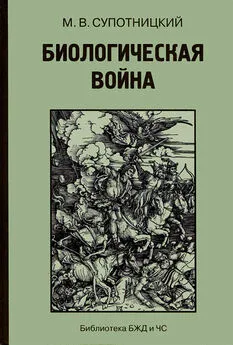
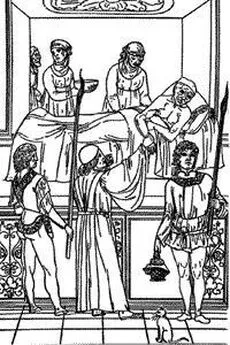

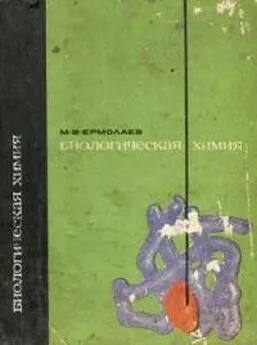

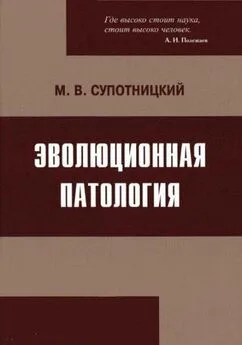
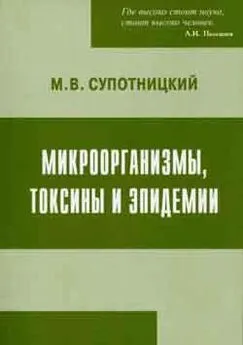
![Михаил Супотницкий - Очерки истории чумы. Книга II. Чума бактериологического периода [без иллюстраций]](/books/1084186/mihail-supotnickij-ocherki-istorii-chumy-kniga-ii.webp)
![Михаил Супотницкий - Очерки истории чумы. Книга I. Чума добактериологического периода [без иллюстраций]](/books/1084187/mihail-supotnickij-ocherki-istorii-chumy-kniga-i-ch.webp)
